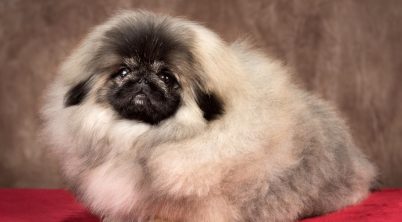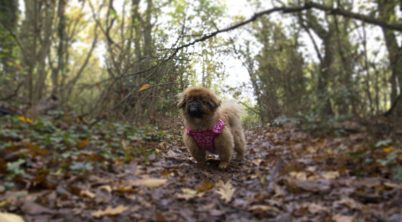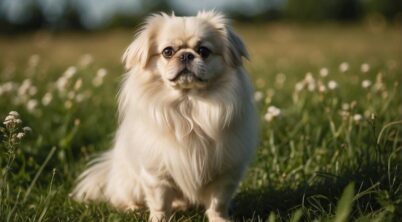Assessing Pekingese Dogs Activity Needs
The Pekingese, a toy dog breed originating from ancient China, is known for its distinctive appearance and regal history. With a low body, slightly bowed limbs, and a “lion’s mane” of fur encircling its head, this small dog is both charming and eye-catching. However, when it comes to the energy levels of these little dogs, one might wonder just how energetic they truly are.
In general, Pekingese dogs possess relatively low energy levels and prefer a more relaxed lifestyle. They thrive in environments that match their calm demeanor, such as apartments or cozy homes with pet owners who appreciate a slower pace. Short walks and indoor playtime tend to be sufficient exercise for these small canines, as they are content with moderate activity and straightforward routines.
However, it is crucial for Pekingese owners to keep their pets’ weight under control, as these small pets can easily become overweight if they receive too little exercise. By monitoring their weight and providing them with sufficient physical and mental stimulation, owners can ensure their Pekingese dogs live happy, healthy lives.
Pekingese Energy Level
Physical Activities
Pekingese dogs are not known for their high energy levels; in fact, they are quite content with minimal daily exercise. These tiny dogs, standing at 6-9 inches tall and weighing approximately 8-12 pounds, would rather spend their time dozing than using up their energy in physical activities.
Given their low energy levels, Pekingese require short walks or play sessions in a secure, fenced-in area. This breed is prone to developing orthopedic conditions, so it’s important to maintain a healthy body weight to prevent further strain on their joints. Fish oil supplements are often recommended to support joint health.
Mental Stimulation
Although Pekingese dogs have low exercise requirements, they still require mental stimulation to keep their brains active and engaged. Providing puzzle toys and games is an excellent way to keep them mentally challenged.
Due to their royal lineage, Pekingese dogs tend to be intelligent and independent, so it’s important to introduce training exercises that cater to these traits. Using positive reinforcement during training sessions will help keep them motivated and focused, as Pekingese can sometimes exhibit a stubborn side.
In summary, Pekingese dogs are not highly energetic pets but still require both physical activities and mental stimulation to keep them happy and healthy. Short walks, play sessions, puzzle toys, and engaging training exercises should be incorporated into their daily routine to provide a balanced lifestyle.
Pekingese and Family Life
Interaction with Adults
Pekingese dogs are known for their calm and easy energy levels, which make them great companions for adults who prefer a more relaxed lifestyle. They enjoy lounging and require only short walks and indoor playtime, making them ideal pets for apartment living or smaller homes. Pekingese dogs are affectionate, outgoing, and especially loyal to their loved ones, allowing adults to truly bond and create long-lasting relationships with these canine companions.
Kid-Friendly Dogs
While Pekingese dogs can interact well with children, it is important to understand their unique temperament and exercise caution when introducing them into a family with young kids. Their calm and easy energy levels may be appealing to busy families, but young children should be supervised during interactions with a Pekingese to ensure the dog’s safety and comfort. As with any dog breed, teaching children to approach and handle dogs with care, respect, and gentleness is an essential aspect of raising a kid-friendly Pekingese.
Trainability
Training a Pekingese dog may require extra patience and understanding, as they are known to be an independent and stubborn breed. However, with consistent and gentle training methods, Pekingese dogs can learn basic commands and become well-behaved family pets. Their lower energy levels may limit the range of tricks and tasks they are willing to learn, but they still possess the intelligence and capability to be trained effectively. Positive reinforcement, such as praise, treats, and playtime, will encourage the Pekingese to engage in the training process and further strengthen the bond between pet and owner.
Conclusion
Pekingese dogs are known for their low energy levels and preference for lounging. These small, affectionate companions make ideal pets for apartment living or individuals with a more relaxed lifestyle. While they may not be as energetic as other breeds, it is still essential to provide them with moderate exercise to maintain a healthy weight and overall well-being.
Ensuring that a Pekingese gets sufficient exercise can be achieved through short daily walks and indoor playtime. Since they are a brachycephalic breed, it is important to avoid overexerting them, especially during hotter weather, as it can lead to respiratory issues.
In summary, the Pekingese dog’s energy level is relatively low, making them a suitable choice for individuals or families who prefer a calmer companion. While their exercise requirements may be less than other breeds, it is crucial to provide them with the right amount of activity to maintain their health and happiness.








